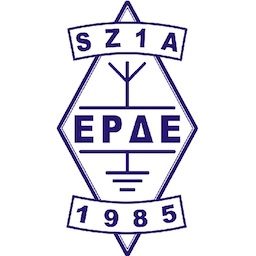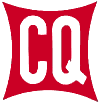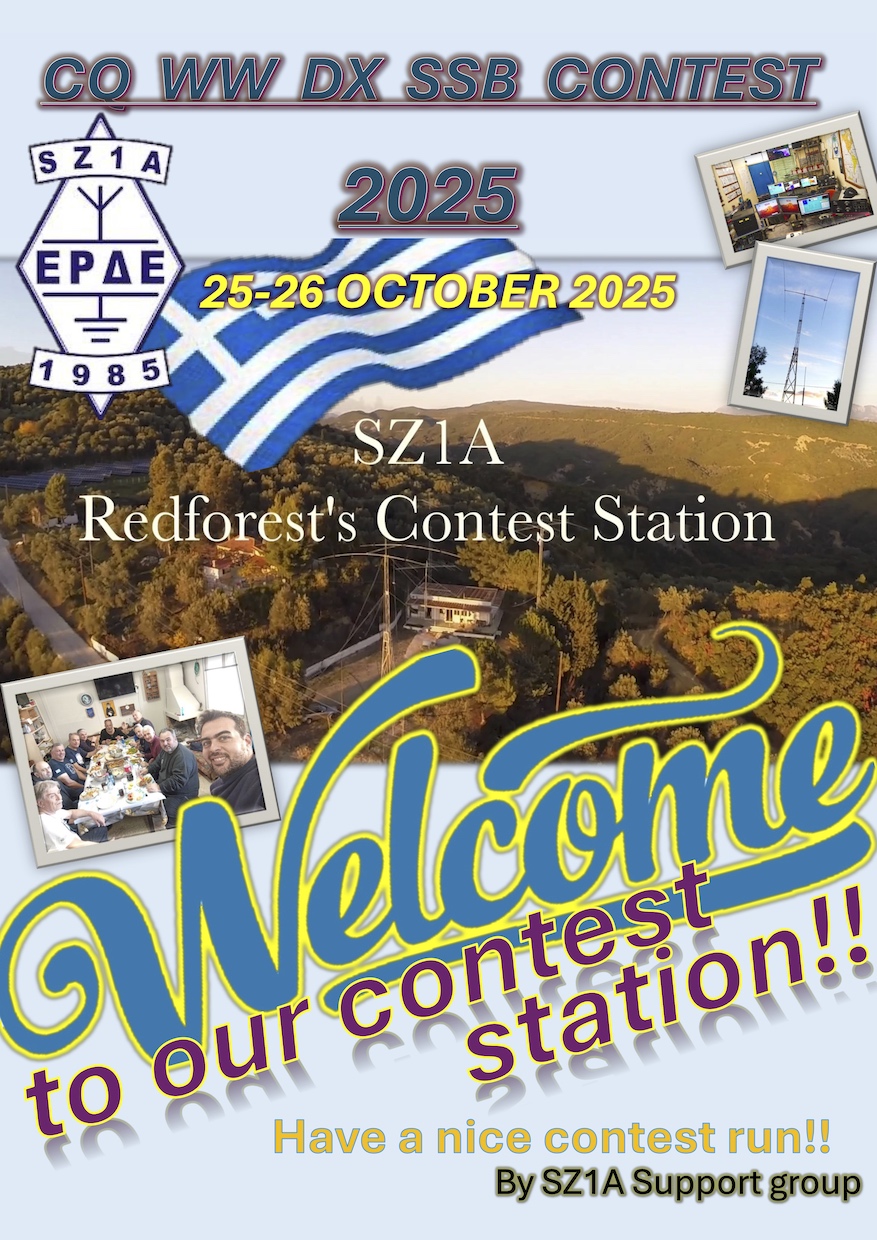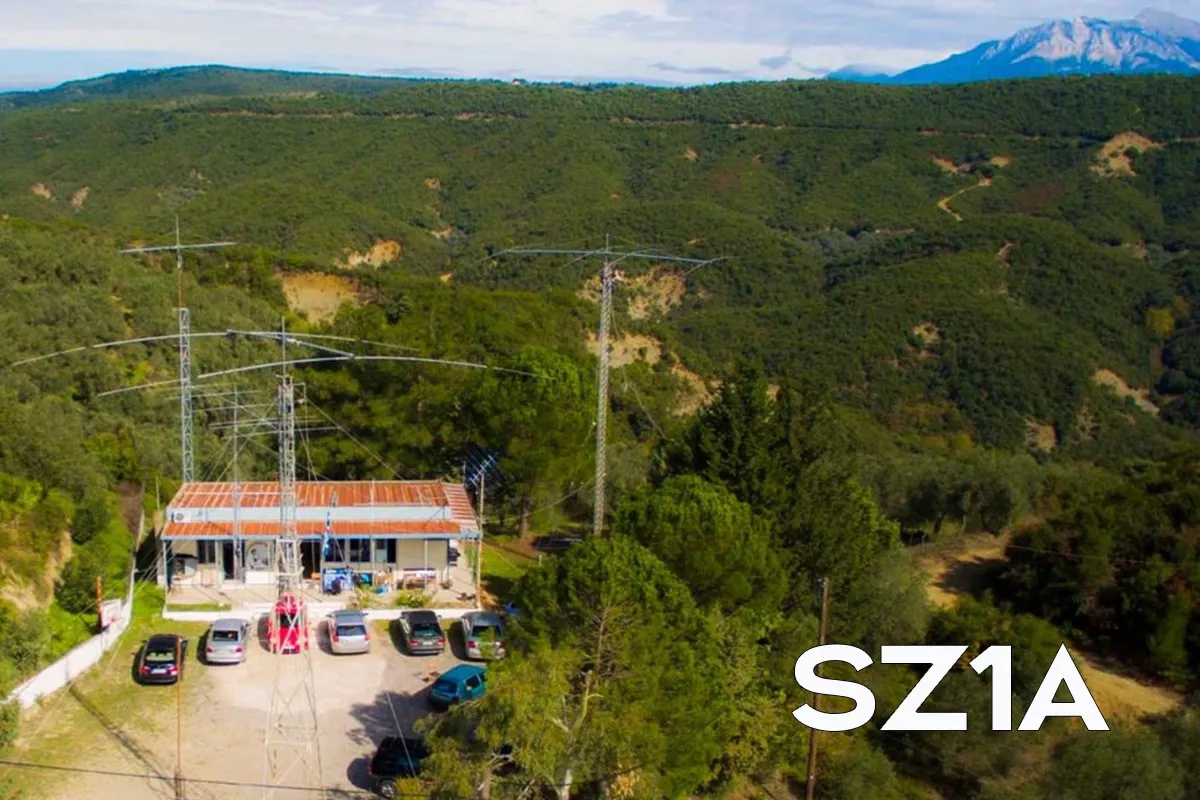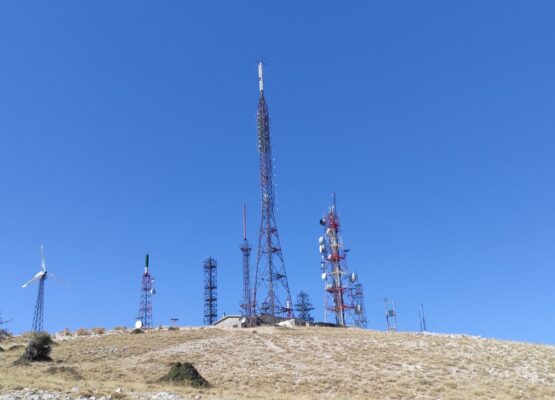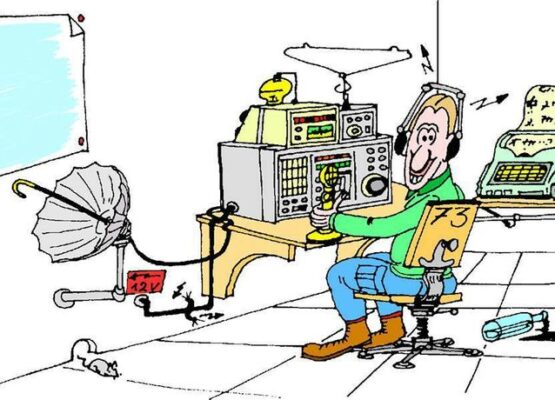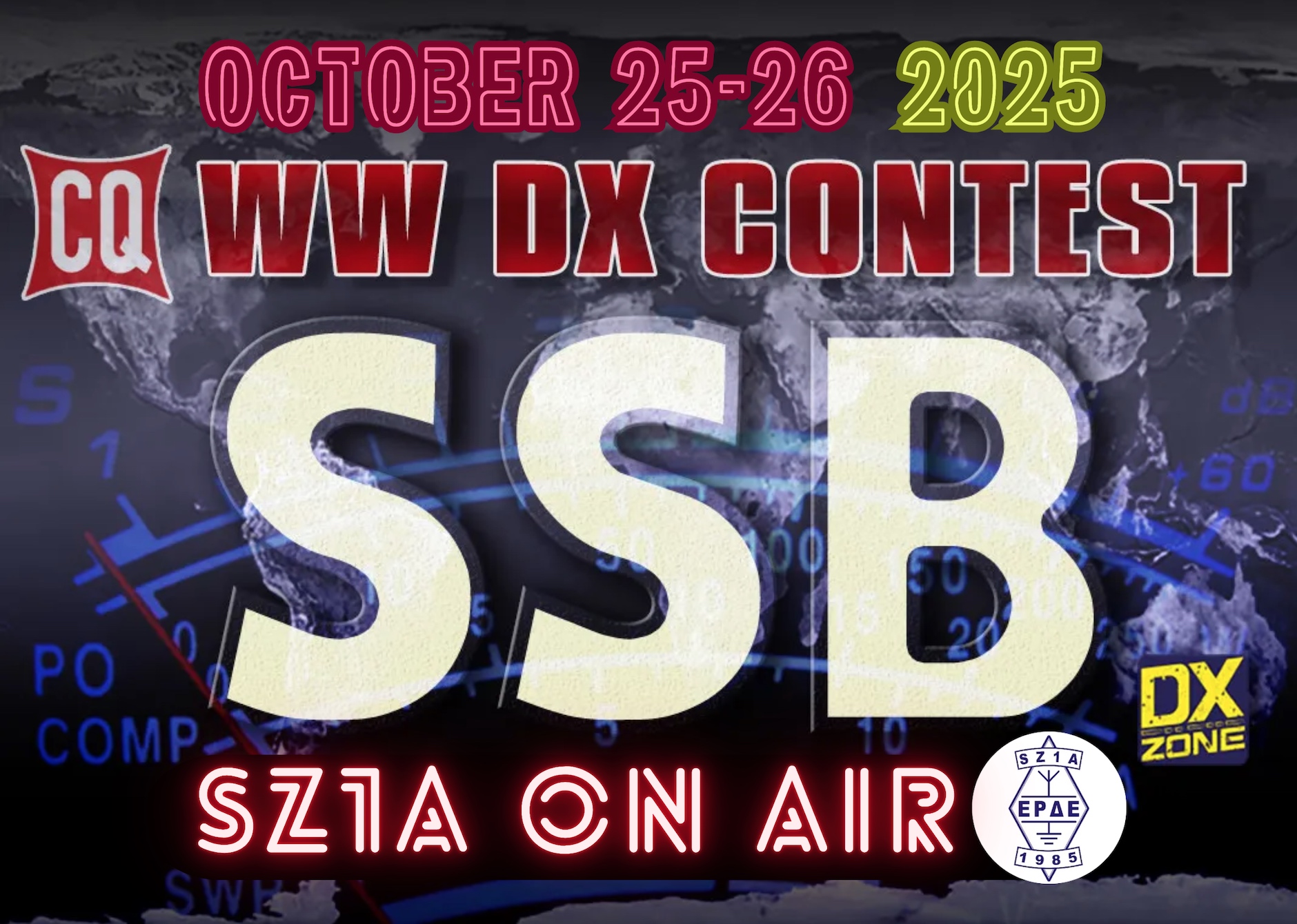
CQ World Wide DX Contest SSB 2025
| Dates & Time: | 00:00 UTC, October 25 (Saturday) – 23:59 UTC, October 26 (Sunday), 2025 |
| Exchange: | RS report (59) and CQ Zone |
| Bands: | 160, 80, 40, 20, 15, 10 meters |
| Objective: | The objective is simple. Work as many countries and zones as you can |
| Official Rules: | https://cqww.com/rules.htm |
| Log Upload: | https://cqww.com/logcheck/ |
Every year, tens of thousands of operators across the world turn on their microphones, point their antennas skyward, and take part in this massive on-air gathering.
The CQ World Wide DX Contest is easy to join but hard to master. Propagation sets the rhythm: ten and fifteen meters come alive with daylight, forty and eighty carry the night, and sunrise or sunset often brings surprises on 160 and 20.
Last year proved again why CQ WW is unmatched. The bands were crowded from edge to edge. Ten meters stayed open for hours, fifteen delivered long, steady runs, and the best operators showed that accuracy and rhythm always beat speed alone. Even small stations found themselves working DX across continents when the timing and propagation aligned.
If you love the sound of a crowded band, this is your weekend. CQ WW DX SSB fills HF like nothing else – 48 hours when the entire world speaks the same language: “CQ Contest.”
The Spirit of CQ WW
CQ WW is the heartbeat weekend of HF. It’s fast, loud, and surprisingly welcoming to new voices. From 160 to 10 meters, you hear the world wake up and go to sleep as the bands open and close. It’s part radio sport and part geography lesson. You learn where signals bend, which paths open at grayline, and how a clean exchange can save minutes across a long night.
It really is “a true DX delight“
What Last Year Taught Us
2024 showed just how big this weekend can get. High bands were alive for hours at a time. Rates were fierce, yet the top stations rose through accuracy and discipline. Youth participation grew, and many smaller stations discovered how far 100 watts can go when propagation smiles.
The numbers tell the story:
- Participation hit a record. 10,098 logs were received, representing over five million QSOs. That’s roughly 1,800 QSOs per minute across the entire weekend.
- Ten meters was on fire. Many stations ran well on 28 MHz. 1,696 entries went mono-10 (about 17% of all logs). Only 42 submitted mono-160.
- Headline results. Tom W2SC operating 8P5A won the World SOAB category with about 16.5 million points and over 10,000 QSOs. Sergii UT5UDX, operating ED5D, led the World Assisted with 11.4 million.
- Multi-multi pace. CN3A topped the category with 56.5 million points and 21,289 QSOs. That’s an average of 443 contacts per hour for two straight days. D4C was second with 43.4 million, and K3LR placed third with 32.3 million.
- Multi-two showdown. The closest race of 2024 came in the Multi-Two category, where P33W edged out CR3A by just 160,000 points – 37.49 million vs. 37.33 million. V47T followed in third with 31.3 million, proving once again that accuracy after log checking can decide the title.
- Multi-single battle. In Multi-Single High Power, PJ4G claimed victory with 19.8 million points, narrowly beating E7DX with 19.1 million. It was one of the most competitive M/S races in recent memory, with Europe challenging the Caribbean right to the finish.
- Single-band standouts. PX2A logged about 4,400 QSOs on 10m for 2.0 million points. CR6T achieved 4,600 QSOs on 15m, and HK1T reached 1.9 million on 20m.
- Future looks bright. 131 youth entries appeared in 2024, led by RA9P with 9.6 million points — ranking 8th among all SOAB stations.
- Cycle 25 helps. We are riding solar peak conditions that favor long, stable high-band runs.
How to Take Part
Exchange: RS report (59) and your CQ Zone
Bands: 160, 80, 40, 20, 15, and 10 meters
Goal: Work as many countries and zones as you can on each band
Tips: Chase daylight on 10, 15 and 20. Work 40, 80 and 160 at night (especially at sunrise and sunset). Keep your logging clean and your calling steady.
Log Upload: https://cqww.com/logcheck/
Official rules: https://cqww.com/rules.htm
Taking part in CQ WW is simple. You exchange RS (59) and your CQ Zone, then log as many contacts as you can across the six HF bands: 160, 80, 40, 20, 15, and 10 meters.
The goal is straightforward: work as many countries and zones as possible on each band during the 48-hour event.
Propagation shapes the rhythm of the weekend. Ten and fifteen meters come alive under daylight, while forty, eighty, and one-sixty take over after dark. Watch the grayline at sunrise and sunset, especially on 20 meters (and not only!) – it often delivers the most unexpected DX.
Keep your calls crisp, your log accurate, and your patience steady. CQ WW rewards consistency as much as speed.
For full details, visit the official rules at cqww.com/rules.htm
And after the contest don’t forget to upload your logs at: https://cqww.com/logcheck/
What Is Special About CQ WW Scoring
- QSO Points: Contacts within the same continent but different countries count for 1 or 2 points (depending on region), and 3 points for intercontinental QSOs.
- Multipliers: Each CQ Zone and each country count once per band.
- Final Score: Total QSO points multiplied by total multipliers.
If you’re new, start on 10, 15 or 20 meters during the day and 40 at night. It’s the perfect way to learn the rhythm of the contest.
Rule Updates for 2025
- Explorer category removed. It has been replaced by Multi-Op Distributed, following the CQ WPX model.
- Audio recordings required for the Top 5 Single Operators, both assisted and unassisted.
- The committee may request a station layout description showing antennas, equipment, switching, and interlocks.
Review the full rules before you enter at cqww.com.
Greece on the Air
Greece will be well represented again this weekend. From small home setups and wire antennas to organized multi-operator efforts, Greek stations will join the worldwide crowd across all HF contest bands.
Last year saw strong participation nationwide. Local operators took advantage of excellent high-band openings on ten and fifteen meters, while the low bands stayed steady through the night. With solar conditions at their peak, 2025 promises even better propagation and an even busier weekend for everyone calling “CQ Contest” from Greece.
SZ1A Contest Station
The SZ1A Red Forest Contest Station is one of Greece’s most active and collaborative amateur radio teams.
Located near Agrinio in western Greece, it serves as a training ground for operators of all ages and experience levels, combining technical development with hands-on contesting.
The station was built from the ground up for performance, reliability, and teamwork.
Every antenna, switch, and feedline has been designed, tested, and refined by volunteers who share a passion for engineering excellence and radio sport.
SZ1A regularly participates in major international contests, often welcoming guest operators from across Europe and further abroad.
Beyond competition, the team values experimentation and education – using every event as an opportunity to learn, improve, and share knowledge with the wider amateur radio community.
SZ1A in CQ WW and What Changed at Our Station
We love CQ WW. In 2023, we set a new Greece record in CQ WW CW, operating in the Multi-Single High Power category and finishing 1st in Greece, 26th in Europe, and 40th worldwide. That effort built the team mindset we carry into every contest.
Our goal: to break into the European Top Ten.
Since last SSB season, we’ve invested where it matters most:
- A taller, stronger 20m system. The 20m monobander now sits on a fully rebuilt 21m tower with Hyperflex-13 feedline replacing RG-213. Expect stronger signals, better low-angle DX, and longer openings.
- 10m monobander serviced. Ready for high-band openings when 10 comes alive.
- Cleaner RF chain. We identified lossy components in the station signal path and reduced insertion loss for more transmit power at the antenna and a cleaner receive path. This weekend will be yet another test of these improvements.
- International teamwork continues. Our station thrives on visiting operators. In 2024, DD2CW, ON3UN, and HB9EBC joined our team for the first time. Now they are a steady part of our core group, continuing the international spirit and joining a great lineup of international members, operators, and friends, including G0PZA, I7PHH, IK7MIY, ON7TQ, LZ1JZ, G3XTT, VK2IR, and ZS6EZ.
Our Plan for CQ WW DX SSB 2025
Callsign: SZ1A
CQ Zone: 20
Category: Multi-Two
We plan to compete in the Multi-Two category, which has become one of the most competitive and exciting classes in recent years. With two main stations running in parallel plus one in-band / multiplier station, we will have three positions manned around the clock for 48 hours. Every second and every QSO matters. The balance between teamwork, strategy, and discipline defines success.
We aim to be active across all bands during prime openings, maintaining smooth operator handovers and close coordination between run and multiplier positions. Ten and fifteen meters will be key during the day if the solar cycle delivers, while forty and eighty meters will carry the load overnight. Twenty meters will most likely be the all-around workhorse, producing contacts day and night.
The goal is consistency: steady runs, clean logging, and efficient transitions that keep the rate meter high from start to finish. Accuracy wins tie breaks, and that’s exactly the plan.
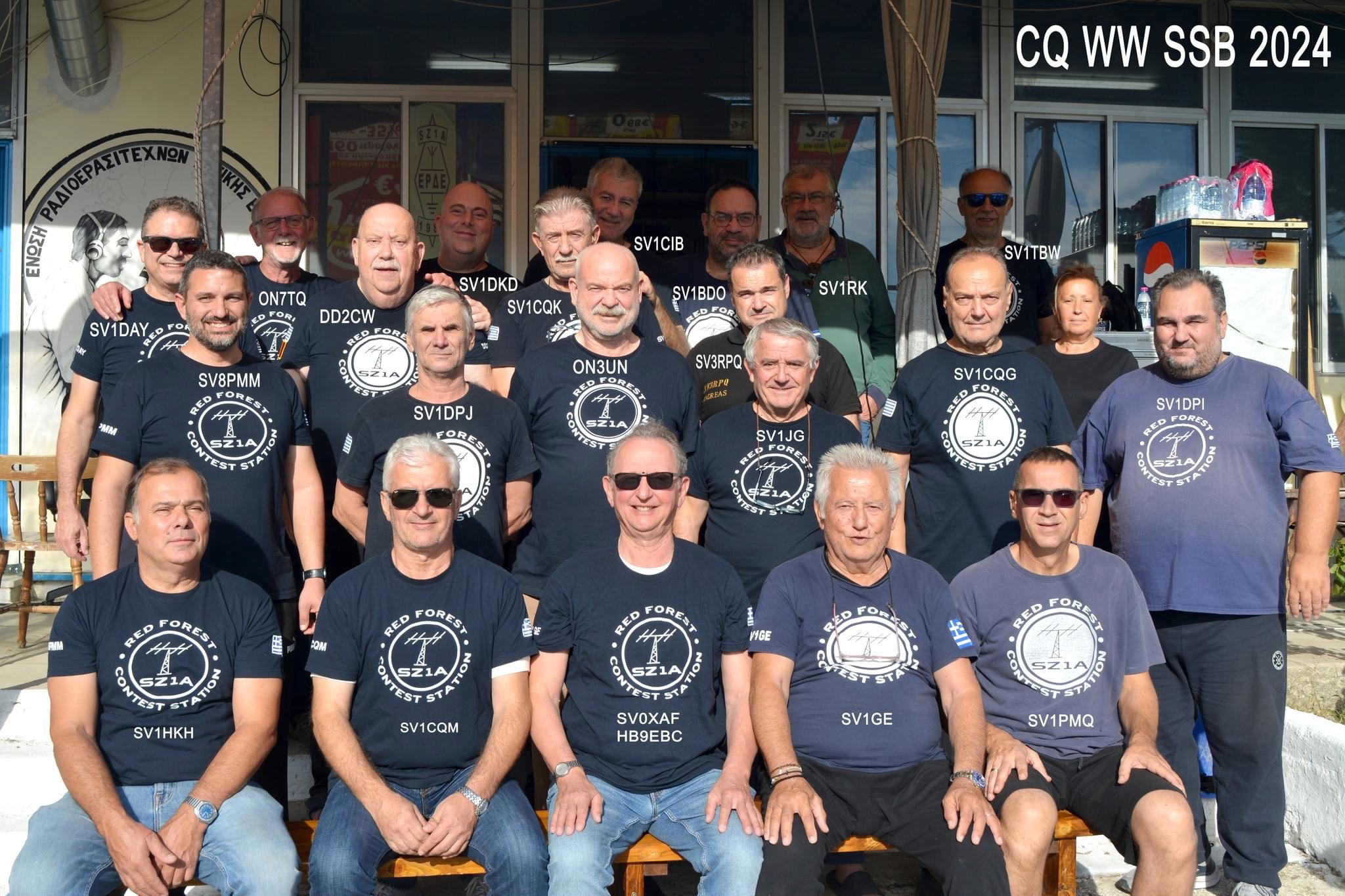
SZ1A CQ World Wide DX SSB Contest Team 2025
(in alphabetical order by callsign)
Operators
- DD2CW – Jef
- HB9EBC/SV0XAF – Mike
- ON3UN – Dirk
- SV1GE – John
- SV1JG – Cliff
- SV1CIB – Dimitris
- SV1DKD – Andy + Nick (His 15-year-old nephew who is a candidate ham in training)
- SV1DPJ – Vasilis (Team Leader)
- SV8LMQ – Dimitris
- SV8PMM – Panos
- SV8SYK – Tax (Young operator)
- SV8TOZ – Vasilis
Support Crew
- SV1BDO – Sotiris
- SV1CQG – Kostas
- SV1CQK – Thanasis
- SV1DPI – Kostas
- SV1HKH – Panos (Special thanks for providing his house for additional sleeping quarters)
- SV1RLC – Thanasis
- SV1RRX – Sotiris
- SV1TBW – Dimitris (Our Broadcast Engineer)
- SV1TIQ – Sotiris
- and SV1CDN – Dennis, who does pre-contest skimmer and propagation analysis.
New to Working Us
Work us once per band and try to contact us on every band you can. Give 59 and your CQ Zone.
If we’re having trouble copying you, please be patient. We might be dealing with QRM or the in-band operator may need a few seconds to finish a contact.
Also remember that we’re always training new members of the team. Some of them are still gaining experience at the microphone, and every contest helps them improve. Your patience and understanding are greatly appreciated.
After our QSO, please spot us on the cluster so others can find us. This is really important for us!
Finally, remember to submit your log even if it’s small. Every log helps improve cross-checking and keeps the final results accurate.
Learn Something from Last Year’s Results
- Category choice matters. With 10 running hot, many operators went single-band. If you want fast action, try mono-10 or mono-15 and track your rate.
- Accuracy is everything. In multi-op races, top scores can flip after log checking. Copy clean. Log clean.
- Youth and rookies are rising. If you know a new operator, invite them over for an hour at the mic. This is how the next generation learns what makes contesting special.
Join the Weekend
Even a few hours on the air will teach you something. Tune, call once, listen, and log. If you work us, try us again on another band. If you can, drop a spot after our QSO so others can find us.
Most of all, enjoy the sound of HF at full steam; it only happens like this once a year.
October 25 and 26. The microphones will be hot. The bands will be alive.
Good luck to everyone in CQ WW DX SSB 2025.
